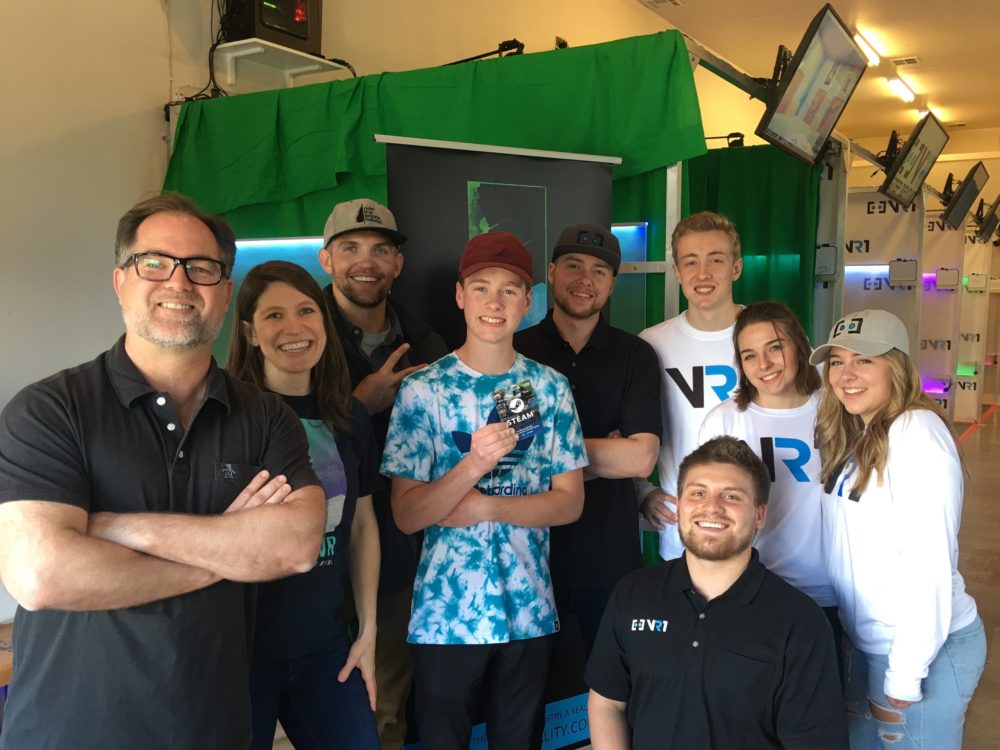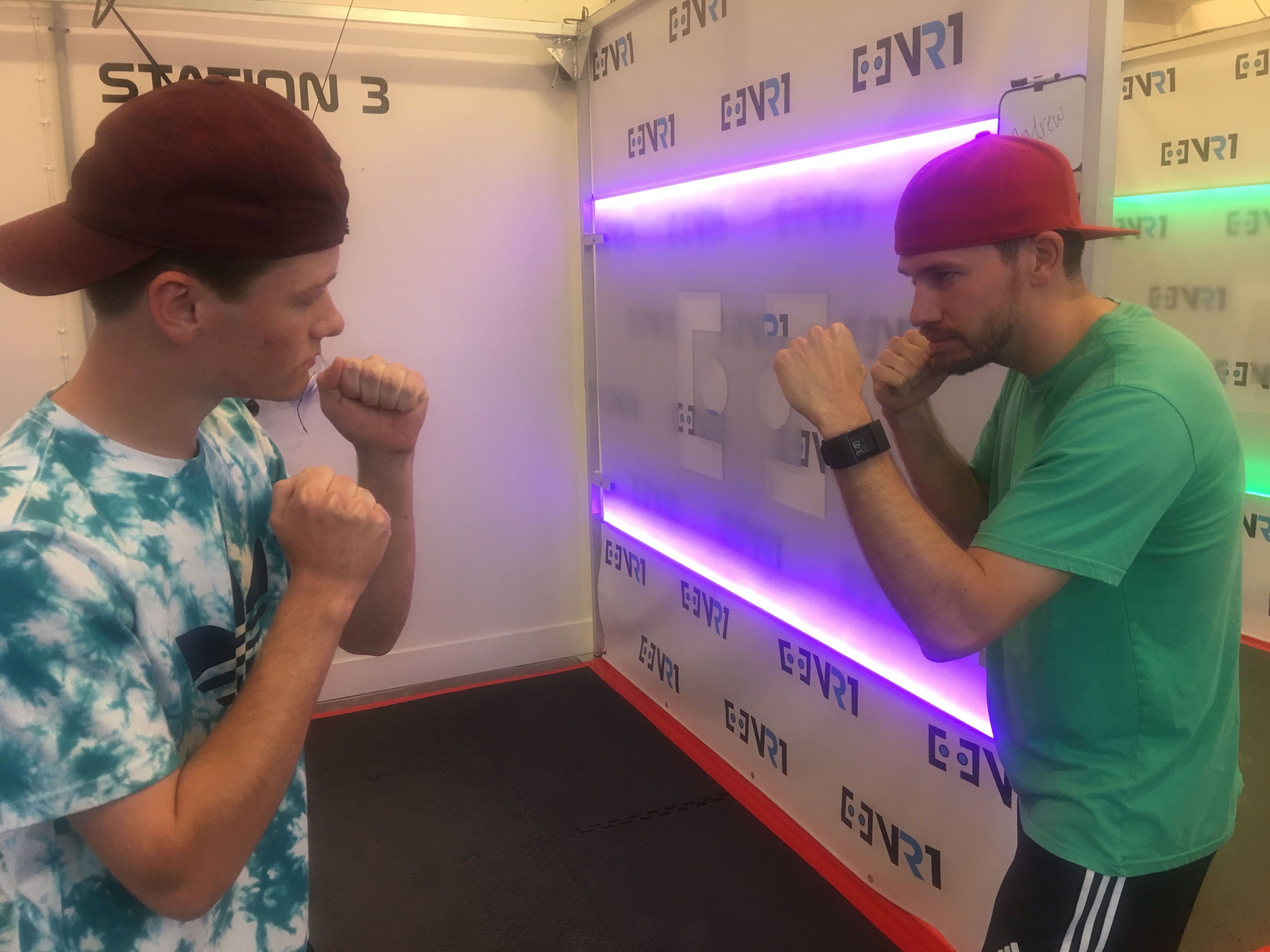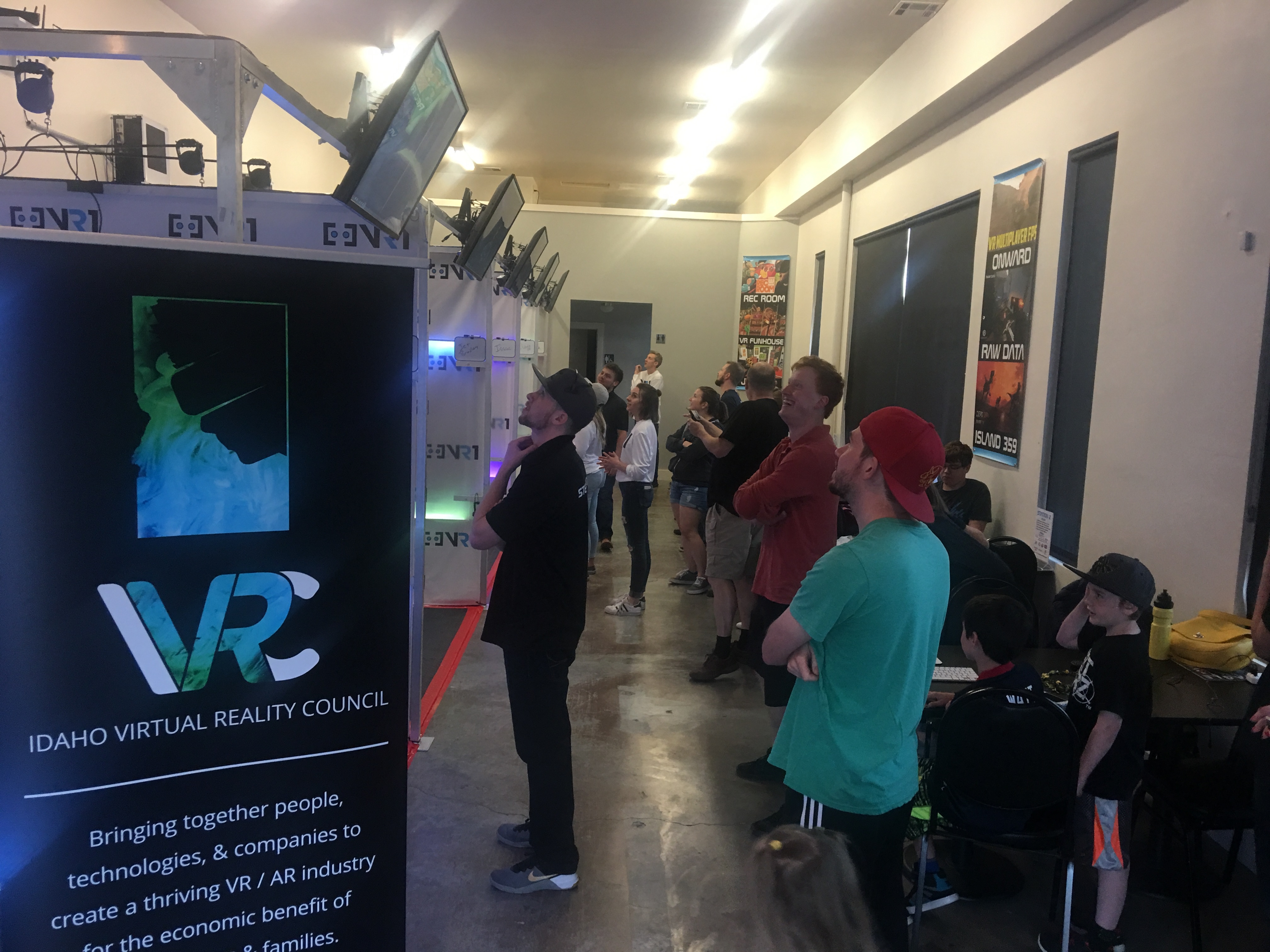
Thousands of spectators stand cheering in a large dimmed room trimmed in neon lights and oversized monitors. Below them lies the arena floor where two opponents outfitted with personalized virtual reality headsets, haptic vests, and wearable controllers are engaged in battle. Thirty tension-filled minutes transpire when at last, one player makes a mistake and is struck down. A single player emerges victoriously, having overcome a half-dozen competitors over a full day of fierce competition.
This particular scenario hasn’t transpired yet, but you can be sure that events like it will be commonplace in the near future. This past Saturday the first steps were taken by the IVRC in collaboration with VR1 Arcade to bring about a future filled with VR e-sporting events in Idaho. Forty future e-sports athletes with ages ranging from five to sixty-five assembled at VR 1 in Eagle, Idaho to participate in the first of many scheduled virtual reality tournaments. The inaugural event was designed to demonstrate how virtual reality experiences can directly translate to actual physical sports competitions.
Many people are familiar with existing e-sports tournaments like DreamHack, Battle.net World Championship, and Major League Gaming, where prize pools can swell to into the tens of millions of dollars. But unlike traditional e-sports, where competitors remain seated around gaming consoles or pcs’, VR tournaments will be much more active events. Competitors will sprint, jump, duck, and strafe in the physical world, and their actions will carry over to their avatars in whichever virtual reality experience they are playing.
For the participants at VR 1, the experience was Racket:NX, a futuristic take on raquetball. Throughout the day, opponents were randomly selected to face-off in multiplayer competition. Each player put on an HTC Vive headset and used a single controller. While in the VR experience, the players were centered in a geodesic dome where they could see their robotic opponent. The avatars mimicked the actions of their human controllers, and each participant alternated hitting a glowing orb at highlighted targets on the walls of the dome with lucent rackets. To win the match, the player had to acquire 100 points.
For me, the event evoked a feeling I hadn’t experienced in a while. As I stepped into the play area and got ready to face my opponent in the third round, I could feel the effects of the adrenaline and endorphins being released into my bloodstream. My heart-rate increased and I became more alert. The feeling was evocative of days past when I played an array of traditional sports such as football and basketball. Two minutes into the match I was losing badly. I put more effort into hitting the orbs, changing my stance and making the motion with my controller like I was hitting a forehand in tennis. The haptics in the controller fired every time I hit the ball making every swing and point of contact feel real. For ten minutes or so I was so focused on the game and my opponent that I forgot about the people standing feet away watching. In the end I lost, but the experience made a lasting impression and left me wanting more. But it wasn’t just this way for me, other participants and spectators had similar feelings. One player, Markus Nigrin excitedly told us:
“I played tennis for many years. Even on an amateur level it is important to read your opponent, identify strengths and weaknesses as you play. Racket NX is much faster paced, less predictable and the opponents visualization is somewhat primitive, but I started to develop that sense for my opponents as the tournament proceeded. In a much more profound way than I experienced with classic screen based multiplayer games. If this is true, the future for VR multiplayer is golden, as that relationship with your opponent is what human sports is all about! Only now we have infinite freedom to create exciting game scenarios.
The other thing I loved is how the virtual action translated for the spectators. Everybody understood the mechanics of the game and the finale was an emotional roller coaster for the audience. Just as good sports should be.
Overall it was a breathtaking experience and I want more! Never been more thrilled to be an IVRC member.”
This is why virtual reality e-sports will be a huge deal in the future. Every person with access to a VR unit will have the opportunity to be an e-sports athlete in one or more of the thousands of multiplayer experiences that will be available. The best part is, they won’t be glued to the couch or gaming chair anymore. At the end of the day it was a great learning experience that will help the IVRC and VR1 put on even better e-sporting events in the future.
If you are interested in participating in one of our upcoming competitions please stay tuned for more information. In the mean time you can practice up on dozens of games at VR1 Arcade in Eagle.







Recent Comments